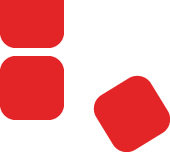Case report 1:
Virtualization of key computers
Process parameters in a production line of a pharmaceutical plant with GMP- standards were operated and monitored by a central automation PC. Data recording and transfer was enabled by a central server. A single point of failure (SPOF) occurrence in the Automation-PC or in the sever led to collapsing of the entire plant production.
Our contribution
- Identification of shortages in the system availability.
- Elaboration of a solution concept.
- Project coordination during implementation and test phase.
- On-site commissioning.
- Establishment of the project plan and test performance.
Result
Two computers were virtualized on two redundant servers allowing for a physical and spatial separation at two sites. On a production-free Sunday, the transition was performed by the customer such that they could easily start production on Monday morning.
Advantages
- High availability secured in cases of a component failure
- Hardware maintenance and upgrades are feasible without production interruptions
- Virtualized infrastructure quickly and easily extendable to additional virtual machines
- Storage snapshots facilitate fast system recovery after a computer crash
- Qualification of our implementation by means of standard processes
- Low license fees compare to alternative redundant systems
- Reduction of the network load
Case report 2:
Open, modular process control and monitoring, oriented to customer needs and benefit
Originally, automatic records of the flow of goods and process parameters as well as a basic monitoring of several production lines were set up. In light of more stringent standards and requirements, recurring modular upgrades were performed to maintain the plant as the state of the art.
As a result, there exist today a heterogeneous field of production lines and control systems in the plant. The machine park is managed and monitored with different modular software systems like iFix, SQL, Access and VB6. Today’s evolving requirements, state of the art and good manufacturing practice (GMP) guidelines continue to motivate continuous upgrade of the system.
Our contribution
- Conception
- Documentation, qualification documents
- Maintenance and care
- Integration of new facilities
- Consulting and support of the costumer in the field of Availability and IT-security
Result
Fully customer-oriented process management and monitoring with the following main functions (more information available upon request):
- Creation and editing of recipes
- Access right control and user administration
- Gapless material flow monitoring, elimination of potential confusion and mix-up
- Record keeping of alarms, errors and manual actions
- Logging of production batches including quality related set points and actual values
- Connection to a central data center for archiving
- Investment security for 25 years, the system is adaptable to needs arising in the future
- Complete insight into the source code
- Independence from software suppliers based on standard solutions accessible to many software companies
- Cost-effective, tailored solution
Case report 3:
Data connection of equipment to a central data archiving system
Various production facilities (PLC, HMI) or SYSTAG automated reactor systems should transfer process data, recipe parameters and audit trails to a company-wide database. However, interfaces between instruments and the data cloud are often missing and the structuring of the data is weak.
Our contribution
- Consulting and elaboration of a solution concept
- Implementation of a solution based on a buffer database
- Tailored programs manage and secure data transfer between data source and buffer
- Full documentation provided
- Work on test concepts, creation of test plans
Result
- Slim solution, personalized to the customer’s needs, interface infrastructure for process
- parameters, recipe values, audit trails, alarms and events
Data connectivity


